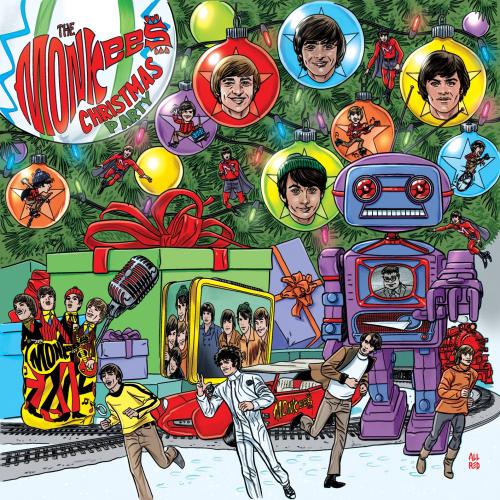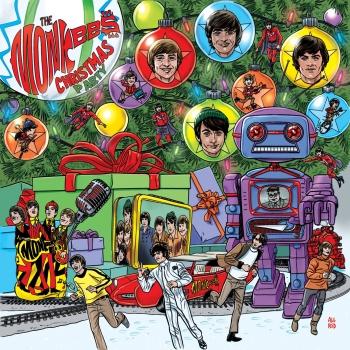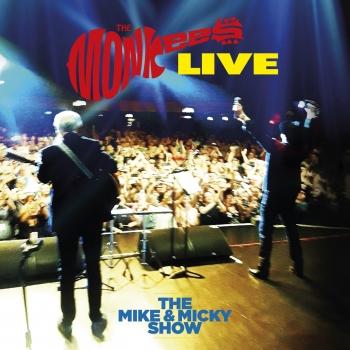
Christmas Party The Monkees
Album info
Album-Release:
2018
HRA-Release:
12.10.2018
Album including Album cover
I`m sorry!
Dear HIGHRESAUDIO Visitor,
due to territorial constraints and also different releases dates in each country you currently can`t purchase this album. We are updating our release dates twice a week. So, please feel free to check from time-to-time, if the album is available for your country.
We suggest, that you bookmark the album and use our Short List function.
Thank you for your understanding and patience.
Yours sincerely, HIGHRESAUDIO
- 1 Unwrap You At Christmas 03:32
- 2 What Would Santa Do 03:15
- 3 Mele Kalikimaka 02:25
- 4 House Of Broken Gingerbread 02:51
- 5 The Christmas Song 03:40
- 6 Christmas Party 03:05
- 7 Jesus Christ 02:37
- 8 I Wish It Could Be Christmas Every Day 03:31
- 9 Silver Bells 03:27
- 10 Wonderful Christmastime 03:33
- 11 Snowfall 02:55
- 12 Angels We Have Heard On High 02:48
- 13 Merry Christmas, Baby 02:57
Info for Christmas Party
The Monkees release Christmas Party, their first ever holiday album.
Featuring Newly Recorded Versions Of Classic Christmas Songs, Along With New Songs Written For The Band By Peter Buck And Scott McCaughey, Rivers Cuomo, Andy Partridge, And Album Producer Adam Schlesinger!
The Monkees will celebrate the season with their first holiday album, featuring new vocals by Micky Dolenz, Michael Nesmith, and Peter Tork. The late Davy Jones' unmistakable voice – taken from vintage recordings – also appears on two songs.
On 'Christmas Party,' The Monkees put their unmistakable vocal stamp on a wide array of classic Christmas tracks, from the R&B holiday standard "Merry Christmas, Baby," to Paul McCartney's "Wonderful Christmastime" and Wizzard's yuletide classic "I Wish It Could Be Christmas Every Day."
After helming The Monkees' critically acclaimed studio album Good Times! in 2016, Grammy and Emmy-winning songwriter Adam Schlesinger reprises his role as producer on 'Christmas Party' All of the album's 13 songs were recorded this year, with "Silver Bells" and "Mele Kalikimaka" using classic Davy Jones vocals from the archives combined with newly recorded music.
Much like Good Times!, Christmas Party features songs newly written for the band by a group of talented songwriters, including Rivers Cuomo of Weezer ("What Would Santa Do") and Andy Partridge of XTC ("Unwrap You For Christmas"). Schlesinger and celebrated author Michael Chabon teamed up to write "House Of Broken Gingerbread." Guitarists Peter Buck of R.E.M. and Scott McCaughey of The Minus 5 play on two songs – a cover of Big Star's "Jesus Christ" and the album's title track, which they wrote together.
Christmas Party also includes two songs with Michael Nesmith on lead vocals, with each track being produced by one of his sons. His take on the yuletide classic "The Christmas Song" was produced by Christian Nesmith while "Snowfall" was helmed by Jonathan Nesmith.
Over the years, The Monkees' amassed a dozen Top 40 hits, including a trio of tunes that soared to #1. Between September 1966 and December 1967, "Last Train To Clarksville," "I'm A Believer," and "Daydream Believer" collectively occupied the top position for 12 weeks. Sales of their LPs were more phenomenal still: The Monkees occupied the #1 position for 13 consecutive weeks, and More Of The Monkees for 18 weeks. Both Headquarters and Pisces, Aquarius, Capricorn & Jones Ltd. went to the top as well, for a four-in-a-row feat in the incomprehensible space of 13 months. The final tally: 16 million albums and 7.5 million singles sold in a mere 2 1/2 years.
The Monkees
The Monkees
"Hey hey, we are the Monkees/You know we love to please/A manufactured image/With no philosophies." In 1968, the Monkees addressed their own reputation in the song "Ditty Diego (War Chant)," which summed up the bad rap they'd received in the music press since they first emerged in the summer of 1966. The Monkees were talented singers, musicians, and songwriters who made a handful of the finest pop singles of their day (as well as a few first-rate albums) and delivered exciting, entertaining live shows. But at a time when rock music was becoming more self-conscious and "serious," the hipper echelons of the music press often lambasted the Monkees, largely because they didn't come together organically but through the casting process for a television series, and they initially didn't write the bulk of their own material or play all the instruments on their records. The fact they later took creative control of their music was often overlooked, and the quality of their music, which featured the work of some of the finest session players and songwriters of the 1960s, often seemed to be beside the point. Time has ultimately vindicated the Monkees, and their music still sounds fresh and engaging decades after it was recorded, but in some circles they never fully shook being branded as "the Pre-Fab Four," no matter how far they moved from the circumstances that brought them together.
The Monkees story began in the fall of 1965, when Bob Rafelson and Bert Schneider, a pair of producers whose Raybert Productions had a deal with Columbia Pictures and their TV branch Screen Gems, came up with an idea for a television series about a rock group. Inspired by Richard Lester's groundbreaking comedies with the Beatles, A Hard Day's Night and Help!, Rafelson and Schneider imagined a situation comedy in which a four-piece band had wacky adventures every week and occasionally burst into song. The NBC television network liked the idea, and production began on The Monkees in early 1966. Don Kirshner, a music business veteran who was a top executive at Colgems Records (a label affiliated with Columbia/Screen Gems), was appointed music coordinator for the series, and Tommy Boyce and Bobby Hart, a producing and songwriting team, signed on to handle much of the day-to-day chores of creating music for the show's fictive band. A casting call went out for four young men to play the members of the group, and Rafelson and Schneider's choices for the roles were truly inspired. Michael Nesmith and Peter Tork were musicians with solid performing and recording experience who also had a flair for playing comedy, while Micky Dolenz and Davy Jones were primarily actors but had also dabbled in pop music and had strong vocal abilities. As the show went before the camera, Kirshner had Boyce and Hart take the four leads into the studio to begin recording the songs that would be featured on the show each week. While initially the cast was only going to provide vocals for material Boyce and Hart had already recorded, the producers were impressed enough with Nesmith's songwriting skills that they chose to use a few of his tunes and let him produce them. With this, the Monkees took their first step toward evolving into a proper, self-sufficient rock band.
The Monkees debuted on NBC in the fall of 1966 and was an immediate hit in the ratings, while "Last Train to Clarksville," the group's first single, had become a number one hit a few weeks earlier (the self-titled debut album would top the chart in October). Rafelson, Schneider, and Kirshner shrewdly allowed the show to promote the records and vice versa, and while the notion that television time could sell pop records was hardly new (Ricky Nelson proved that almost a decade earlier), no one had made it work with quite the success the Monkees achieved almost immediately. Dozens of Monkees-related products flooded the marketplace, from toy guitars and lunch boxes to board games and models of the custom Pontiac the guys drove on the show. In late 1966, someone got the idea of booking a few live shows with the Monkees, and recordings of their early concerts prove that while not all four were virtuoso musicians, they worked well together on-stage and were a energetic, rough-and-ready rock band who could work a crowd. As the Monkees gained confidence in their abilities as performers, they began to chafe under the restrictions imposed on them by Kirshner, who had full control over what songs they would record and who would produce and play on the sessions. More, than visit: http://www.monkees.net
This album contains no booklet.













